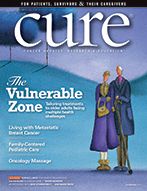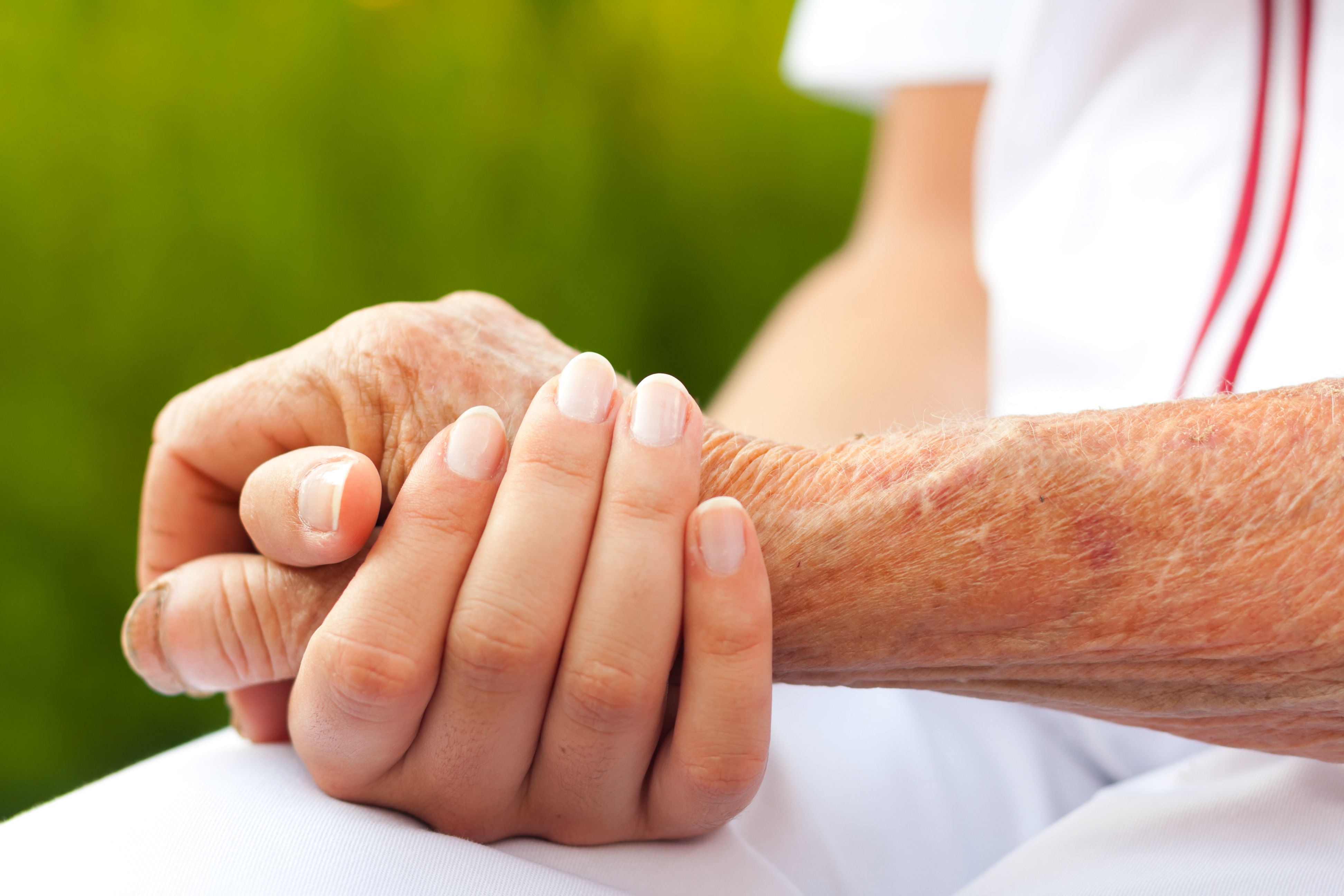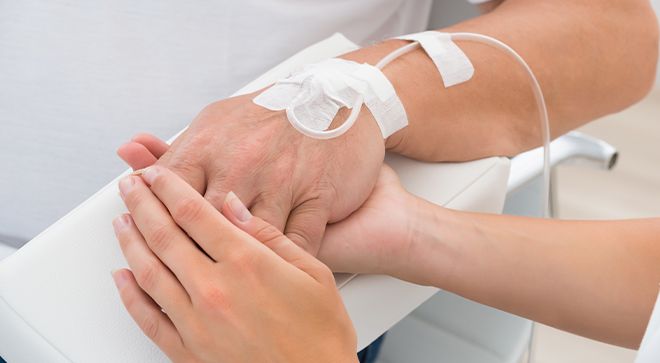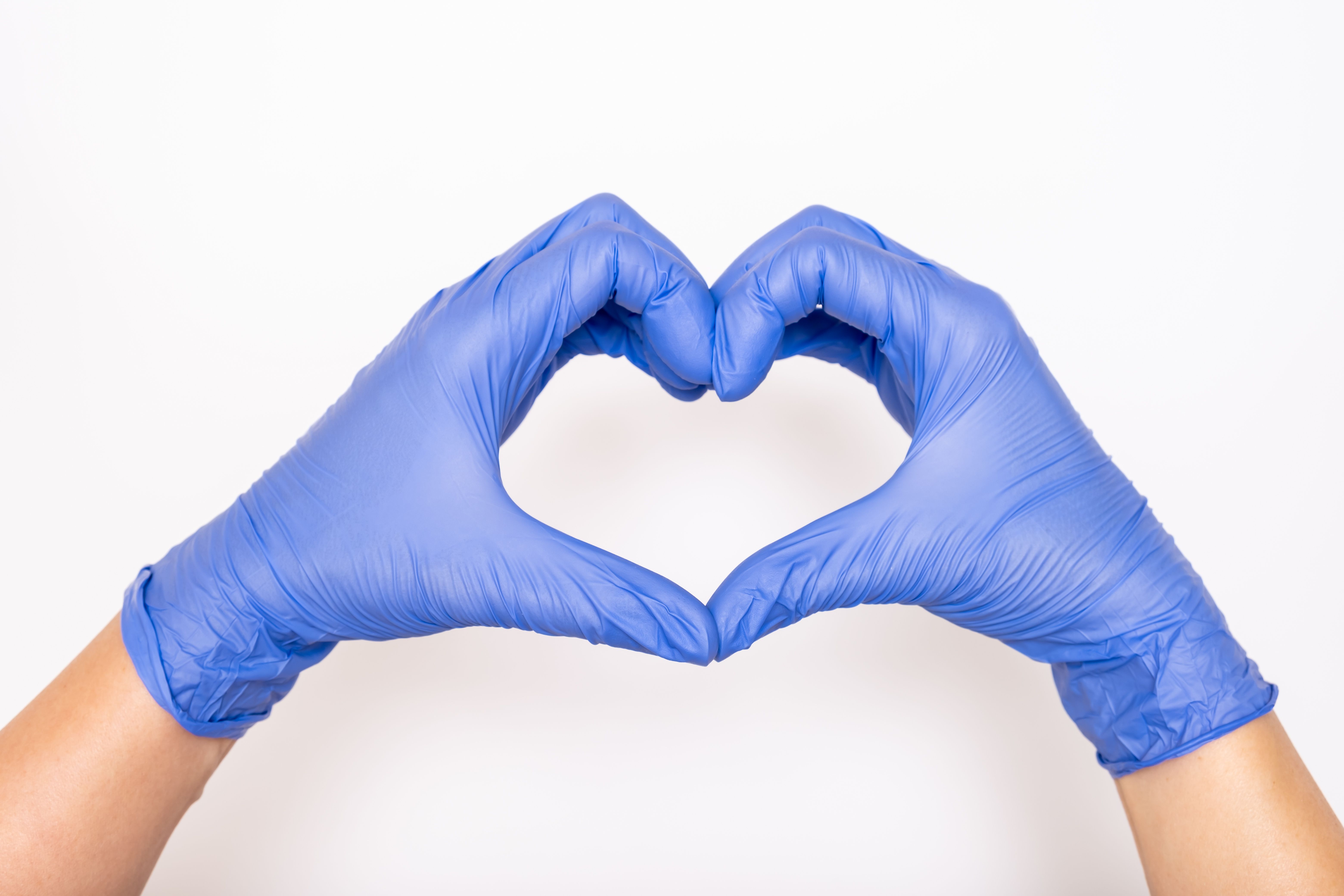Publication
Article
CURE
A Touch of Healing: Massage Can Alleviate Symptoms of Cancer, Treatments
Author(s):
Oncology massage can help alleviate many symptoms of cancer and its treatments, as long as practitioners have the right qualifications.
In past encounters, a massage table and a set of laboring hands, rigorously kneading out the day’s tensions, had been a routine and welcomed sight for Shelly Bain.
But a stage 3 breast cancer diagnosis in the winter of 2014 would be a game-changer for the then-38-year-old Texan.
“I was someone who had gone for massages all throughout my life,” Bain says, “but when I went for a facial in between my diagnosis and chemo, the specialist was afraid to work on me.” Although the fear was unfounded, Bain recalls, “she was worried about spreading it.”
Four months of chemotherapy, a 12-hour bilateral mastectomy, reconstruction surgery and seven weeks of radiation only put Bain further on edge.
“I was so focused on the cancer treatment, I hadn’t had a chance to do a lot of self-care,” she says, “and I was so tired from it all.”
PHOTO COURTESY OF GERI RUANE
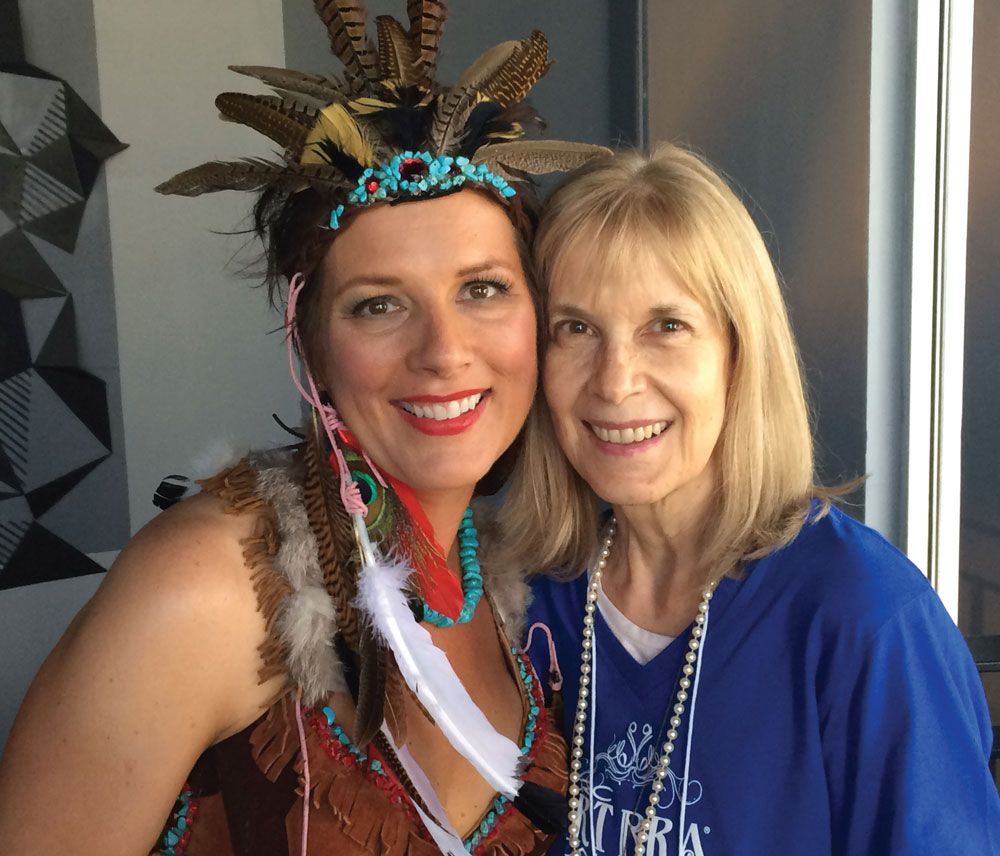
Oncology massage therapist GERI RUANE, right, poses with client SHELLY BAIN during a fundraiser for a breast cancer resource center. Ruane volunteered at the event, and Bain modeled an artist-crafted bra. [PHOTO COURTESY OF GERI RUANE]
Once chemotherapy was underway, a few inquiries led Bain to the threshold of Geri Ruane.
A retired educator-turned-massage therapist, Ruane is one of a small but growing number of individuals in her field who specialize in treating former and current cancer patients. Ruane became a certified oncology massage therapist in 2011, and currently operates a burgeoning Austin-based private practice, Two Roads Massage Therapy.
“Now 50 percent of my clients have had treatments or are survivors of cancer,” she says. National findings are mimicking Ruane’s account, only to a larger degree.
A 2011 Consumer Reports survey extrapolated that more than 38 million Americans make about 300 million visits each year to complementary and alternative medicine specialists, including acupuncturists, massage therapists and chiropractors.
As for future prospects, the U.S. Department of Labor Bureau of Labor Statistics’ 2012 Occupational Outlook Handbook asserts that employment for massage therapists is expected to increase by 23 percent from 2012 to 2022, faster than the average rate for all occupations. According to the observations of those at one major industry organization, an increase is happening specifically in oncology massage, as well.
Alleviating Discomfort
“Over the past few years, particularly, we have seen an increase in those who have taken our trainings and then been able to be recognized as preferred practitioners,” says MK Brennan, board president of the Society for Oncology Massage, a resource for the field’s practitioners and physicians alike.A steady stream of Ruane’s patrons began their battles as patients of medical oncologist and hematologist Debra Patt, director of policy at Texas Oncology in Austin. According to Patt, who also regularly treats patients, oncology massage doesn’t factor into longevity. Nevertheless, the list of its positive impacts on overall health is lengthy.
“We’re big fans,” she says of the technique. “It’s great, because it’s not a pill that I have to give them.”
According to some leading cancer centers that offer it, oncology massage can help to alleviate a host of maladies associated with the disease, medications or other treatments: nausea, swelling, sleeplessness, anxiety, pain, neuropathy and mobility-reducing scar tissue. In addition, researchers at Emory University are studying whether the technique can help patients who are battling fatigue. “My goal might be to help them sleep better, to give them more energy or help decrease neuropathy,” Ruane echoes. “We consider their range of motion, if lymph nodes have been removed or if they have scar tissue.”
Lymphedema, a common side effect of cancer treatment, may be eased via oncology massage and manual lymph drainage. This condition affects patients who’ve undergone lymph node removal or radiation therapy. A blockage in the lymphatic system, which prevents lymph fluid from properly draining, can contribute to build-up and, consequently, swelling, most often in the extremities. It can also occur in the face, neck, abdomen and genitals.
Oncology massage therapists are trained in how to use the proper techniques (pressure and direction of stroke) in areas where fluid is retained, helping it drain. In a 2015 study of 80 patients, half of whom received abdominal massage for fluid retention caused by cancer, those who received massage experienced a perceived improvement in depression, anxiety, poor well-being and abdominal bloating. Many leading cancer centers see value in oncology massage, including MD Anderson, Fred Hutchinson, Dana-Farber and City of Hope, and studies provide some support for the value of this technique, although they are few and small.
One, published by the International Journal of Nursing Practice in April 2014, found that massage lessened pain and anxiety levels among pediatric cancer patients who were undergoing bone marrow therapy.
Another small 2014 study found that stress levels and health-related quality of life improved when oncology massage was administered to patients being treated for acute myelogenous leukemia. In addition, a 2013 study of 40 patients undergoing chemotherapy found that back massage reduced their levels of anxiety and fatigue.
As a proponent of oncology massage, Patt rarely misses an opportunity to clear up one of the more widely held misnomers about the practice.
“There is a myth about the concern of cancer spreading, which is not based in fact,” she says. “There’s no risk of the spread of cancer due to massage; there can be a risk of vulnerability to tissue.”
An Educated Choice
Managing, or working around, those vulnerable areas, such as broken bones, requires the therapist to have a good understanding of the medical condition, Patt says.Knowledge remains power for patients with cancer who are having their first experiences with this still largely pioneering field.
“It’s important to go to a massage therapist who’s trained in this,” Ruane stresses. “Ask if they’ve had training in oncology massage. If so, what was their training and how would they adjust their massage techniques for that person?”
While there’s no national certification available in oncology massage, schools can certify through a program. When someone goes through a weekend workshop, they receive a certificate of completion; advanced certification programs are also available, although only at a sparse number of schools around the country.
Licensed in professional massage therapy in Texas in 2007, Ruane graduated from Lauterstein-Conway Massage School, in Austin, after accumulating 550 hours of training; since then, she’s spent another 1,000 hours in continuing education, including the certification program in oncology massage training at the Peregrine Institute of Oncology Massage Training in Santa Fe, New Mexico, a certification in complete decongestive therapy that included training in lymph node drainage, and training in geriatric and pediatric massage therapy.
During her oncology massage program, Ruane made a series of cross-country treks, during which she closely studied the precision of technique and targeted movements. She also devoted many hours to attending advanced classes, lectures and training, authoring papers on research and reflection, delving into community service projects and completing externships. It took 18 months of hands-on training for her to clench the coveted qualifications.
“You learn how to accommodate the health needs and goals for each person and how to modify existing massage techniques so that you can give a safe and effective massage to people living with cancer,” she says. “You might need to adjust your pressure, or you might need to modify the positioning of the person on the table. In addition, you would avoid touching certain areas due to drains, dressings or open wounds.”
For many in the industry, education doesn’t end at graduation, as the medical field continues to expand its understanding of the complexities of cancer. For example, Memorial Sloan Kettering Cancer Center offers an online training course for massage therapists in medical massage for the cancer patient that includes 25 lectures over a span of 18 hours of coursework.
“Most recently, I took a class, here in Austin, about working with people at end of life,” Ruane says. “Since all of us are going to die someday, the information that I learned is going to help me personally, as well as help me with my clients and their families.”
She adds, “I’ve lost many clients, and it’s been hard. But I feel so honored to be able to offer my service to a person who really needs me, as well as being able to comfort the family.”
Basically, it becomes the client’s responsibility to ask the harder questions about the type of training received and the extent of experience a massage therapist has had with cancer patients, as well as to consult with a physician before embarking on the alternative therapy.
If a massage therapist offers a simplified explanation of his or her methods, promising a “gentler touch,” that should raise a red flag.
“Everyone’s interpretation of a gentle touch is somewhat different, so it’s really important that the massage therapist is trained,” Ruane says. “There are so many different types of touch. Oncology massage is not deep tissue, and we don’t massage over or near areas of known tumor involvement. Comfort, stress reduction and relaxation are some of the goals. I feel that not just compassion, but also clinical knowledge are necessary components for an oncology massage therapist.”
The questioning process should be a two-way street, with therapists asking for details about a patient’s condition.
In her industry travels, Ruane has been told that seeing background medical information, such as X-ray images or a doctor’s notes, is not necessary, although she would jump at the opportunity to have such extensive information about weakened bones, prescriptions, immune deficiencies or other issues. In reality, many oncology massage therapists rely on word of mouth, either from their clients, who explain their own conditions, or through consults with treating oncologists.
“Even with a doctor’s order, it is best for the client to see a trained oncology massage therapist, who will know the appropriate questions to ask to make safe adjustments to the massage, and who will often include the physician in the massage care plan conversation,” Ruane says.
Patients can begin their search for qualified oncology massage therapists in their local areas by visiting the website of the Society for Oncology Massage at s4om.org, clicking on the “Massage Therapists” button and scrolling down to the “Find a Therapist” section.
Feeling Results
“Contact and other information is available on the therapist’s profile page so that patients, survivors, family and friends are able to discuss services and prices,” Brennan says.On her first visit, the slight adaptations that distinguish oncology massage made all the difference for Bain.
“It’s a lighter touch, for sure,” she says. “The movement is very deliberate, toward the heart.”
In Bain’s case, having more than a dozen lymph nodes removed from the left side of her arm proved a hurdle in her road to recovery. “I had tissue taken from my abdomen and moved to my breast,” she says. “The thing that hurt the most was my lymph nodes. They cut through the muscle and there was tightness and pain.”
Weeks would pass before mundane household chores caused Bain to overexert her arm. On one particular day, she looked down to discover that her weary appendage had “blown up.”
A remedy, however, was a phone call away, as an antidote lingered at the tips Ruane’s fingers.
Trained in manual lymph drainage technique, Ruane would eventually send Bain on her way with noticeable relief, a few at-home tips for sleeping and sedentary positioning, a self-guided DVD for draining and the assurance that this was a surmountable obstacle.
“It’s not as relaxing as when she does it, but I can manage it on my own,” Bain says. “It shows you just how much she cares.”
While the physical rewards of oncology massage set in almost immediately for Bain, she gradually discovered that an inner healing was also afoot.
“Once you relax, you can get away from some of the scary places in your head — even if it’s just for an hour,” she says.
In fact, Ruane’s office has become a sacred space for many like Bain, who are grappling with a disease and, at the same time, coming to terms with their own mortality and physical limitations.
The True Cost
“There are those who have talked to me, who’ve cried, slept, snored or shared stories,” Ruane says. “They are just so appreciative of a compassionate touch from someone who understands…I think each person goes through it separately, feeling very much alone, and everyone has their own stories.”While prices by treatment and packages vary, a typical 60-minute session with Ruane may run a client around $80.
“The average charge is $68 per hour, according to an industry report done by the American Massage Therapy Association (AMTA),” Brennan goes on to say. “The cost for a session will vary depending on location, but generally is between $60 and $120 per hour.”
Like most of this therapy’s loyal followers, Bain is paying strictly out-of-pocket, even though she believes her massage treatments — which continue although she’s been cancer-free for a year — are justified from a cost-benefit standpoint. Whereas health insurance payments for surgery, prescriptions and other commonplace cancer treatments are the status quo, by and large, insurance companies have not begun covering alternative therapies or holistic treatments.
According to a March 2015 article in U.S. News & World Report Health, insurers decide whether to cover alternative therapies based on the amount of supporting evidence available in peer-reviewed scientific journals. Aetna, for instance, does not cover massage. And if payment is offered for complementary therapies, insurers may cover only limited services or numbers of visits.
Yet 71 percent of American adults want their health insurance plans to pay for massage therapy, according to an AMTA industry fact sheet.
The Affordable Care Act enacted in 2010 may change the landscape for insurance coverage of alternative therapies.
In seven different sections, the law mentions complementary and alternative medicine and integrative health care, in part due to the lobbying efforts of the Integrative Healthcare Policy Consortium, a coalition of organizations backed by Capitol legislators who advocated for these unconventional treatments. In section 2706 of the law, one clause prohibits insurance companies from discriminating against health care providers, including integrative health care practitioners, with respect to their participation and coverage in health plans.
“While this section of the ACA has not been fully implemented, the state of Washington has had a similar provision in place for years, and two other states, Oregon and Rhode Island, have recently enacted their own versions of 2706,” Brennan says. “Hawaii and California will likely be bringing legislation forward again for consideration about this…In Canada, massage therapy is commonly covered by extended health benefits.”
Brennan encourages patients to appeal any insurer’s decision not to pay for oncology massage.
“Patient advocacy is one of the cornerstones for educating insurance companies, health care providers and others of the value of massage therapy when provided by someone trained in oncology massage,” she says.
There may be a flip side to pushing the issue, however. “It would be ideal if insurance companies covered complementary services,” Patt says, “but the natural consequences of that coverage expansion is that insurance premiums will increase.”
Giving Something Back
Already, the rare health plans that cover alternative treatments tend to require that patients pay higher deductibles, according to insweb.com, which answers insurance questions and offers quotes.A handful of organizations are doing what they can to lighten the load. Angie’s Spa (angiesspa.org), for instance, is dedicated to providing free oncology massage services, currently at seven hospitals around the country.
“An example of this is MD Anderson Cancer Center (in Houston) that has received $20,000 from Angie’s Spa to support their massage, yoga and acupuncture services,” Brennan says.
And then there’s the nonprofit Oncology Massage Alliance (oncologymassagealliance.org). The group launched in Austin back in 2010, when a small troop of massage therapists, including Ruane, converged on Texas Oncology’s infusion room, offering free hand-and-foot massages to patients, caregivers, medical staff and even family members.
“A side effect (of chemotherapy) is neuropathy, numbness in hands and feet,” and the massages were intended to help relieve it, explains founding member and OMA Executive Director Gail Bailey.
Four massage therapists made up OMA’s original core team, a number that’s now ballooned to 37. Fundraising to support the group has gained momentum, too, from $5,000 in that first year to more than $25,000 in 2014.
Since OMA requires its massage therapists to acquire oncology massage training, it offers educational stipends to give its members a helpful nudge in the right direction. Using grants and donations, OMA also pays its therapists a nominal $25 per hour for their volunteer work — enough to offset expenditures like gas or product replacement.
“The goal for us would be to help therapists in their areas to connect with infusion centers,” Bailey says. “It gives therapists an opportunity to work, and it helps medical professionals open up and bring in integrated medical services.”
As of late, this altruistic faction has exported its services from Austin to Dallas, Houston and beyond. In mid-October, Bailey received word that OMA affiliates had been approved to begin visiting patients at a medical facility in Medford, Oregon.
“There’s a special bond you get when you provide this service to someone going through cancer,” Bailey says. “We’re not medical staff, we’re not taking (extensive histories, physical examinations), vitals or blood. There’s no stress with burdening the family and there’s no agenda that they have to worry about.”
The response from the Center at Providence Hospital in Medford regarding OMA’s arrival was in kind.
C
“It’s been wonderful,” said David Adams, a charge nurse with the Medford facility’s infusion center. “The patients love it. It puts them at ease, it gives them a feeling that we care about their needs. It’s a great part of the holistic approach.”
